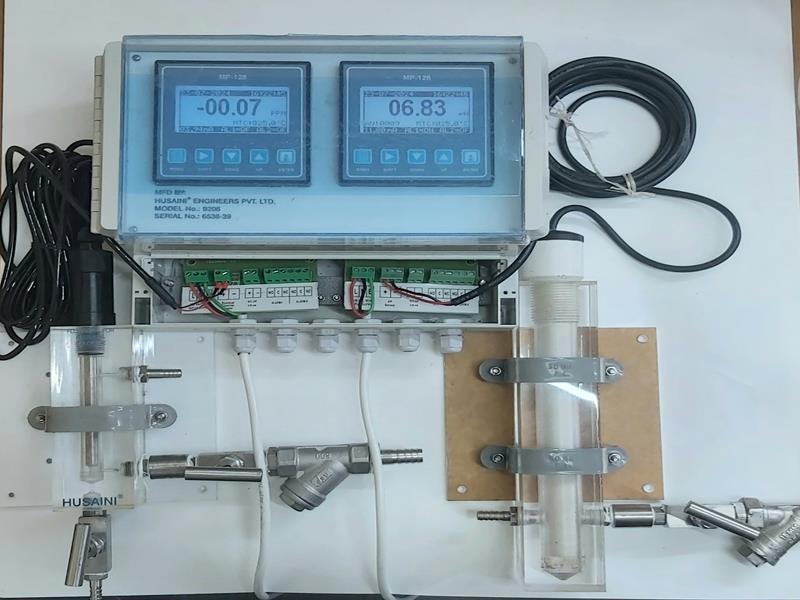Residual pH Controller

Residual pH Controller
A Residual pH Controller is a cutting-edge solution for monitoring and maintaining the pH level of liquids in industrial processes. It plays a crucial role in ensuring efficiency, safety, and reliability across diverse applications by keeping the pH within a precisely controlled range. Here’s an overview of its significance, features, and applications.
The Residual pH Controller automatically monitors pH levels in real-time, offering continuous control to ensure solutions remain within the desired range. This makes it a critical tool in processes where pH fluctuations can lead to inefficiencies, equipment damage, or hazardous outcomes.
The Residual pH Controller from Husaini® is a cutting-edge device designed to continuously monitor and control pH levels in water treatment systems.
It ensures optimal pH balance for safety, efficiency, and compliance with environmental standards, making it an essential tool for various industrial and municipal applications.
Benefits of Using a Residual pH Controller
- Operational Efficiency: Ensures optimal conditions for gas scrubbing, cooling, and chemical reactions.
- Cost Savings: Minimizes wastage of chemicals and reduces equipment maintenance costs.
- Safety: Prevents hazardous conditions by maintaining pH within safe limits.
- Automation: Reduces labour costs and human errors through advanced automation features.
Key Features of the Residual pH Controller
- Real-Time Monitoring: Continuously tracks pH levels and provides instant alerts for deviations.
- Automated Adjustment: Automatically doses acids or bases to maintain desired pH values, reducing manual intervention.
- Data Logging: Records pH data for process analysis and predictive maintenance.
- High Reliability: Designed for robust performance even in harsh industrial environments.
- Integration: Compatible with modern industrial automation systems for seamless operation.
Applications of Residual pH Controller
Gas Scrubbing and Emissions Control
- Optimizes the removal of harmful gases like chlorine, sulfur dioxide, or ammonia by maintaining the correct pH of scrubbing liquids.
- Enhances gas absorption efficiency, reducing emissions and environmental impact.
Cooling Water Systems
- Prevents corrosion, scaling, or fouling by regulating the pH of cooling water in gas production and processing facilities.
- Extends equipment lifespan and protects sensitive gas sensors.
Chemical and Industrial Processing
- Maintains precise pH levels in reaction media for chemical production, improving process efficiency and yield.
- Ensures safe handling of processes involving gas generation, such as hydrogen or CO₂ production.
Water and Wastewater Treatment
- Regulates pH during disinfection, neutralization, or purification stages to meet environmental compliance standards.

